Your Life On The Ledger: Net Zero Is The Goal
 By Anita B Hoge
By Anita B Hoge
June 4, 2024
Data Is The Lifeblood Of The Global Well-Being Economy. A Statistical Plan Is Moving Forward In The United States To Change Our Capitalistic System Through Forced Compliance, Super Surveillance, and Mother Nature.
It’s the data. President Biden has pushed his Green New Deal antics and proposed a statistically threatening journey that should have Americans gasping for air. America’s days are numbered. Every financial transaction you make will align with an accounting framework that records your every movement by monitoring anything purchased or consumed through your carbon footprint. So where you 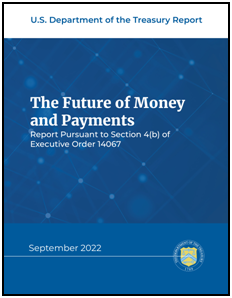 live, what you do, what you eat, and every aspect of your life will be monitored and resourced to its origin, a natural resource. Why? It is so that you can be monitored and taxed for every movement and carbon footprint. Read here: National Strategy To Develop Statistics For Environmental-Economic Decisions (Statistics Plan: Legislation source: p. 86)
live, what you do, what you eat, and every aspect of your life will be monitored and resourced to its origin, a natural resource. Why? It is so that you can be monitored and taxed for every movement and carbon footprint. Read here: National Strategy To Develop Statistics For Environmental-Economic Decisions (Statistics Plan: Legislation source: p. 86)
What is Net Zero? It balances the amount of greenhouse gases we emit with the amount we remove. We reach net zero when we add no more than what we take away. According to the World Economic Forum, “every financial transaction has a climate consequence – whether it is obvious, such as filling up your car with petrol or booking a long-haul flight, or subtle, like when you buy a coffee or a new pair of shoes, or even increase your cloud storage plan. Our daily choices leave a carbon footprint.” (Source)
Look at Mother Nature and how President Biden plans to change your life with every financial transaction you make. The Biden administration 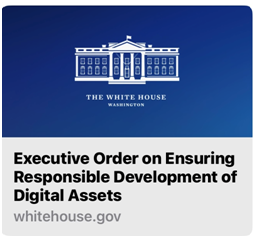 lays out a plan to reach Net Zero by changing the financial system in this country. Your consumption of natural resources and your carbon footprint will be subtracted from your income or added to the purchase price of products. You will be taxed accordingly. Data is streaming. The financial record-keeping will ultimately be tied to blockchain-based technology overseen by Central Bank Digital Currency (CBDC) to regulate this river of data. (The Future of Money and Payments), Money and Payments: The U.S. Dollar in the Age of Digital Transformation, k, Executive Order Digital Assets) Forced compliance and taxing will punish you until you change your daily life. Your purchasing behavior and what you own will be monitored assuring your targeted assets will be included. Capitalism and freedom are compromised through data optimization while your government is allowing you to be hacked. The intent, of course, is to create a global citizen that complies with Net Zero.
lays out a plan to reach Net Zero by changing the financial system in this country. Your consumption of natural resources and your carbon footprint will be subtracted from your income or added to the purchase price of products. You will be taxed accordingly. Data is streaming. The financial record-keeping will ultimately be tied to blockchain-based technology overseen by Central Bank Digital Currency (CBDC) to regulate this river of data. (The Future of Money and Payments), Money and Payments: The U.S. Dollar in the Age of Digital Transformation, k, Executive Order Digital Assets) Forced compliance and taxing will punish you until you change your daily life. Your purchasing behavior and what you own will be monitored assuring your targeted assets will be included. Capitalism and freedom are compromised through data optimization while your government is allowing you to be hacked. The intent, of course, is to create a global citizen that complies with Net Zero.
The Plan To Kill Capitalism In The United States.
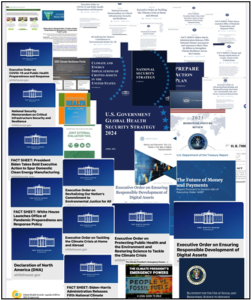 The Biden administration began this effort to destroy our country the day he took office, January 20, 2021, starting by signing Executive Orders unwinding President Trump’s policies, claiming a climate crisis. The United Nations’ fingerprints are all over this agenda, including the World Economic Forum, WEF, Office of Economic Cooperation and Development Council, OECD, and the International Monetary Fund, IMF, and WHO, World Health Organization. (Source, p.15)
The Biden administration began this effort to destroy our country the day he took office, January 20, 2021, starting by signing Executive Orders unwinding President Trump’s policies, claiming a climate crisis. The United Nations’ fingerprints are all over this agenda, including the World Economic Forum, WEF, Office of Economic Cooperation and Development Council, OECD, and the International Monetary Fund, IMF, and WHO, World Health Organization. (Source, p.15)
The OECD-Beyond GDP-Measure What Counts For Economic And Social Performance policy paper states that we should be “…measuring the joint distribution of income, consumption and wealth at the individual level…inequalities within households and the way resources are shared and managed.” The OECD refers to natural assets as “hidden capital.” These globalists believe our capitalistic economic system is “rigged” to benefit a few. (Beyond GDP: pg 19) Source: OECD Measure What Counts, Executive Summary, (Link here: (National Strategy To Develop Statistics For Environmental-Economic. Decisions)
The Overarching Biden Resilience Plan
The Biden administration initiated the Federal Plan for Equitable Long-Term Recovery and Resilience for Social, Behavioral, and Community Health on 1/20/2022, explaining that the COVID-19 pandemic had accelerated and exposed deeply entrenched disparities in health and well-being. Using the whole-of-government approach, President Biden revamped every government area to promote his well-being agenda. This plan cannot be implemented until statistics are collected to monitor natural resources in our everyday lives, and your carbon footprint can directly correlate to individual consumption. Time may be on our side.
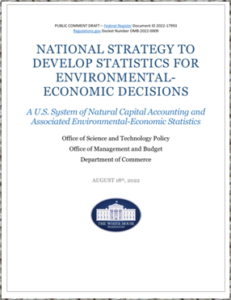 It’s The Data
It’s The Data
August 2022, President Biden delves into merging environmental statsitics into the United States economic model. Five months later the Biden administration released the national strategy to fund a 15-year statistical plan documented, January, 2023. The 15-year statistical plan written to measure the air you breathe, the water you consume, the food you eat, and the energy you use, will be all determined by nebulous numbers based on nature aligned to your every action. The Department of Commerce would need the ability to direct all financial transactions and the monetized value and quantity of your carbon footprint through consumption, in a standardized international format linked to every individual.
The entire 15-year Strategic Plan to be finalized by 2036 is based on three concepts: monetizing the value of natural asset boundaries cross-referenced to the behavior of individuals through consumption. (p. 15)
• direct contribution,
• defensive expenditures, and
• individual and household production.
“Environmental activities are one way of connecting environmental goods and services and natural capital to other economic sectors and capturing relationships among produced (capital), natural (capital), and human capital.” (Emp. Mine) (p. 49)
The Wellbeing and Sustainability Task Team includes “services individuals produce for themselves.” This topic is closely related to “unpaid household service work,” discussed in the 2025 SNA revision. (p.24) The smothering concept of monitoring EVERYONE in this agenda includes people who work (income) and people who don’t work and have no income, including stay-at-home Moms, retired persons, people on assistance, etc. Everyone is identified, monitored, and given a monetary value minus consumption. (See Wellness graph link here: United  Nations Statistics Division. (2022). (p. 5) Wellbeing and Sustainability Task Team) (Important in how these services are tallied. Worth a look. Source: Unpaid Household Service Work🙂
Nations Statistics Division. (2022). (p. 5) Wellbeing and Sustainability Task Team) (Important in how these services are tallied. Worth a look. Source: Unpaid Household Service Work🙂
• FIRST: a system of statistics is being developed by putting a NUMBER on the quantity and value of natural resources that will be identified in nature (water, air, land, fish, wildlife, plants, forests, minerals.)
• SECOND: a value will is placed on using those natural resources in your everyday life. (Consumption)
• THIRD: a “stocks and flows” system will determine how natural resources are used in industry, households, and government. (See graph on stocks and flows on page 80.) You will be penalized twice for the amount of natural resources you use: purchase + consumption.
One investment vehicle failed last January at the Securities Exchange Commission/New York Stock Exchange, SEC/NYSE, called the Natural Asset Company (NAC). I believe the most important plan is the collection of data. The Statistical Plan is the weakest link which is a compilation of statistics to measure the consumption of natural resources that the Biden administration joined with the U.N., OECD, WEF, and the IMF and is moving forward.
NACS Natural Asset Companies Currently Withdrawn by the SEC: (SEC withdraws NACs-failed plan. “The New York Stock Exchange is initiating a partnership that enables trading of natural assets in the form of “Natural Asset Companies” to facilitate liquidity between natural capital and financial capital. Firms increasingly focus on voluntary frameworks to guide environmental, social, and governance (ESG) reporting, such as the framework developed by the Taskforce on Nature-related Financial Disclosures (TNFD) and the Natural Capital Protocol. However, business leaders often cite uneven data quality and definitions as a barrier to using natural capital in decision-making. A standardized, regularly- updated national system of natural capital accounts and environmental-economic statistics is necessary for these frameworks to succeed and to enable U.S. firms to compete as other countries develop such accounting systems.” (pgs. 9-10) NOTE: I believe the SEC withdrew the plan because the statistics were not wholly developed when the NACs were initiated.
 This is the plan needed for the globalists to succeed: A National Statistical Plan: (National Strategy To Develop Statistics For Environmental-Economic Decisions.
This is the plan needed for the globalists to succeed: A National Statistical Plan: (National Strategy To Develop Statistics For Environmental-Economic Decisions.
The Statistical Plan is proceeding with warp speed. The Biden administration is developing statistics for individual consumption of natural resources, your carbon footprint by referring to natural assets and climate change by using the terms “environmental injustice” and “inequities among households” (p. iv, p.11) and tracking progress on the UN Sustainable Development Goals (SDG). (p. 82)
This statistical plan is supposedly a way to balance the rich vs. poor on an equitable basis. Biden stammers through his latest speeches with comments about targeting billionaires, but his words have a deeper meaning than most could predict. Of course, the Biden administration wants the controversy erupting between the “average household vs. the rich” when, in essence, his agenda covers every person in the United States. So how is wealth redefined, and how will everyone, not only the rich, be punished by the Biden administration and the United Nations agenda?
Equalizing Households.
 The rich must be penalized, and there is no better way to punish them than by “equalizing households” through the consumption of natural resources. In essence, the more you own, the more you pay. But everyone uses natural resources; it’s not only the Robin Hood effect of “take from the rich.” According to the United Nations, the depletion of natural resources or Net Zero is everyone’s cross to bear. For example, property and consumption of any/and/all natural resources will be monitored: land, air, water, forests, minerals, fish, wildlife, plants, etc.
The rich must be penalized, and there is no better way to punish them than by “equalizing households” through the consumption of natural resources. In essence, the more you own, the more you pay. But everyone uses natural resources; it’s not only the Robin Hood effect of “take from the rich.” According to the United Nations, the depletion of natural resources or Net Zero is everyone’s cross to bear. For example, property and consumption of any/and/all natural resources will be monitored: land, air, water, forests, minerals, fish, wildlife, plants, etc.
Just think about how people are impacted every day by a natural resource. Your every movement will be monitored: from purchasing food, using gas/electricity to heat/air condition homes, charging your phones, taking a shower, turning on the lights, what you spend on groceries, beverages, alcohol, eating out at restaurants, farming, home gardening, construction, medicines, vacations, running the dishwasher, cooking, using the restroom, irrigating your yard, or playing outside, hiking, boating, swimming, sports and outdoor activities, etc. These examples do not address how these statistics will impact industry and manufacturing. The total for using natural resources will correlate to a score (your carbon footprint) that will be taxed or subtracted from your human capital (worth or wealth of the individual).
One comment in a footnote referenced in the Statistics Handbook defines where this agenda is going- if you put a canoe into the river, can they allot an amount of rent for using water? YES, RENT. The well-being and sustainability social accounts include everyone, even homemakers or caretakers of family members who do not make a salary but yet, use natural resources. This instance proves that these new environmental add-ons to economics and GDP, Gross Domestic Product, are extended to include everyone’s consumption. And that score means everyone. A new system that monitors EVERYONE’s BEHAVIOR will be instituted into the financial system even if you do not make a salary. Why? You are using natural resources every day. Your carbon footprint must be monitored. Net Zero is the goal.
Where Do You Live? How Will This Be Done?
A direct correlation gives a numerical account of the impact to the environment and personal use. ZILLOW is used to place an estimate of “hundreds of millions of property transactions within a hedonic framework to estimate property-level land values of residential, agricultural, commercial, and industrial land. These values are aggregated to local, state, regional, and national levels.” (p.43) Even though you have already paid for real estate or any product you personally use, you are fined or taxed a natural asset tax that will be monitored by location or through purchasing products. The combination of subtracting consumption from your income, will be correlated to your address for other debits or combined household production. This is an extreme method of wealth redistribution. (See footnote 24) U.S. Bureau of Economic Analysis. (n.d.). Regional Data: GDP and Personal Income. Retrieved August 5, 2022.
The Shut Down Of Capitalism
The thinking of this liberal U.N. agenda is that capitalism, a failed economic system, has created a too-top-heavy economy by only using GDP as an economic thermometer of how well the country is fairing. The rich are getting richer as the rest of the economy is lagging. They refer to this problem as “GDP Fetishism.”
“It used to be thought that America’s greatest strength was not its military power but an economic system that was the envy of the world. But why would others seek to emulate an economic model by which a large proportion – even a majority – of the population has seen their income stagnate while incomes at the top have soared?”
“The report by the International Commission on the Measurement of Economic Performance and Social Progress emphasized that GDP is not a good measure of how well an economy is performing. The U.S. Census reports remind us of the importance of this insight. Too much has already been sacrificed on the altar of GDP fetishism. Regardless of how fast GDP grows, an economic system that fails to deliver gains for most of its citizens and in which a rising share of the population faces increasing insecurity is, in a fundamental sense, a failed economic system. And policies, like austerity, that increase insecurity and lead to lower incomes and standards of living for large proportions of the population are, in a fundamental sense, flawed policies.” (Emp. Mine. Source: “America’s GDP fetishism“)
Another often-quoted author/economist who is recognized as an expert by the UN is Mariana Mazzucato, who wrote “Mission Economy: A Moonshot Guide to Changing Capitalism.” Mazzucato is also chair of the World Health Organization’s Council on the Economics of Health for All.
Let’s Talk About Freedom. Can You Put A Number On Walking On The Beach or Viewing A Scarlet Red Sunset?
The “National Strategy To Develop Statistics For Environmental-Economic Decisions” handbook explains this agenda as “a change in wealth held in nature.” The key is how wealth is changed or how our freedom will be affected by adding fees to our everyday lives. Changing the definition of wealth will eliminate the middle class with only super rich and BOP (bottom of the pyramid) poor people with a less than 15-year-phased in approach to destroy our capitalistic economy and private ownership of property. The fees will be astronomical. People will lose their homes and livelihoods by pushing industry out of business.
This idea of “double dipping” that you purchased something made organically or from a natural resource will relate to how you use or consume it. The biggest problem is grounded in the fact that the industry or consumer has already paid for whatever it is they are using. But first, they have to put a value on natural resources to create an algorithm to determine how they are used for consumption as an extra fee beyond the purchase price. The numbers are staggering.
“…connect information on nature and the economy to help America prosper as the country overcomes 21st-century economic challenges, including those linked to climate change, biodiversity loss, air and water pollution, and environmental injustice.” (p. ix) Remember to these environmentalists that maintaining a garden, fishing, or raising farm animals is ecocide. Every movement will cost you, and every behavior is correlated with nature.
Beyond GDP Gross Domestic Product (pg. 5)
“Economists often state that Net Domestic Product (NDP), which deducts for loss of assets—including natural assets—is a better benchmark measure of economic progress than GDP. The international community is expected to call for increased accounting for and attention to natural resource depletion, degradation, and growth and increased focus on NDP and Net National Income (NNI) as part of the 2025 update to the internationally agreed upon System of National Accounts (SNA). Change in wealth, inclusive of natural asset wealth, is also a critical indicator of sustainable development. By considering changes, rather than only depreciation, NDP or NNI can be linked to Adjusted Net Savings.” (p. 5) “Measuring the change in Natural Asset Wealth requires ascribing a monetary value to changes in natural assets in order to provide a common unit that can be compared. This Strategic Plan unifies environmental sectors and traditional economic sectors under a single framework.” (p. 34) “Guidance for translating these measures into a national-accounting context and back again will help strengthen the monetization components of the accounts and enable the natural capital accounts to be a starting place for benefit-cost analysis.” (p. 65) (Emp. Mine.)
What Is Counted And WHO Is Counting?
Equalizing The Inequality Within Households-The Mold For Conformity.
Income inequality is different from wealth inequality; the former involves salaries/wages, while the latter involves net worth. When the United Nations groups decide to target wealth, they target net worth with a focus on “consumption at the individual level” or “inequalities within households.” The Central Framework written collaboratively by the U.N. groups has targeted this agenda for some time. What is frightening is that the Biden administration is prepping our country to dive into changing our capitalistic economy without Congressional authority or American approval. See the International System of Environmental-Economic Accounting 2012 below:
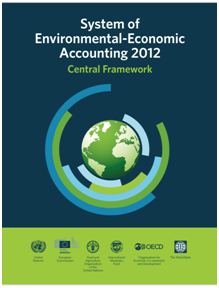 OECD “Measure What Counts For Economic and Social Performance:”
OECD “Measure What Counts For Economic and Social Performance:”
“Inequality in income and wealth has today a central role in policy discussions in ways it did not in 2009. But important progress is still needed in a range of areas, such as measuring what happens at both ends of the income distribution, integrating different data sources, and measuring the joint distribution of income, consumption and wealth at the individual level. When looking at inequality, it is also important to look at differences between groups (“horizontal inequalities”), at inequalities within households and the way resources are shared and managed, which are especially important in the case of wealth.…. It is also important to pursue efforts to integrate information on economic inequalities within national accounts, to provide metrics of how GDP growth is shared in as timely a fashion as output statistics.” (OECD Executive Summary)
The Statistical Plan Recommendation 3 is to meld the United States together with the United Nations Plan: Federal departments and agencies should embed the system of natural capital accounts and associated environmental-economic statistics in the broader U.S. economic statistical system through the following actions: (p.15)
a) Incorporate the internationally agreed-upon SEEA to guide development of U.S. natural capital accounts and environmental-economic statistics, where the SEEA standards are relevant and robustly developed. (See System of Environmental Economic Accounts, SEEA)
b) Adhere to three specific asset boundaries—direct contribution, defensive expenditures, and individual and household production—to accommodate different applications and contexts, which implies creating three partitions in the natural capital accounts.
c) Use rigorous and the best available economic science for monetizing the value of natural assets, with monetization being consistent with the three established asset boundaries.
All factories and industries in America should investigate the significance of the economic impact of “stocks and flows” definitions, which will impact fees attached to all products made or produced using natural resources. The Stocks and Flows Appendix B is the internationally agreed-upon guidance on national economic accounting, the SNA, with the NIPA. It is significant to evaluate the physical elements of natural resource services that pinpoint the areas provided through harvest or functioning in the environment.. (More details about the relationship between environmental-economic statistics and national economic accounts can be found in Stocks and Flows Appendix B.” (Quoted on p.15; go to page 80.)
STOCKS AND FLOWS
Appendix B. Connecting Natural Capital and Environmental-Economic Statistics with National Economic Accounts.
“Stocks and Flows”
“The concepts of stocks and flows are used throughout the Strategic Plan. Stocks are durable, physical elements of nature that can provide services either through harvest or through their regular functioning in the natural environment. When the services convey production, income, in-kind or implicit income, or future opportunities, then the stocks are capital or assets. Physical flows are the creation, destruction, or movement of material. For examples, the generation of particulate matter through combustion or the harvest of timber from a forest are physical flows. The process creating income is also a flow. The relationship between flows and stocks is similar to the relationship between kinetic and potential energy – flows reflect changes in stocks. This creates accounting identities that are used in natural capital accounting and environmental-economic statistics.”
“The environmental and natural capital elements of many of these indicators could be supported through supply-use and other underlying statistical organizations laid out in this Strategic Plan. SEEA compliant natural capital accounts increasingly play an important role in tracking progress on the U.N. Sustainable Development Goals (SDG). Other social progress measures, such as those based on subjective well-being or “happiness,” would require separate statistical efforts. Furthermore, purely biological or ecological indicators could be appropriately covered by other initiatives, such as the National Nature Assessment.” (p. 82)
“You will own nothing, and you’ll be happy,”
The World Economic Forum guarantees the probability and result of this quote, where Biden’s Green New Deal gives the money, data, and expertise needed to accomplish these goals. WATCH
Plan of Attack:
The United States began to collect environmental data in the United States when Nobel laureates William Nordhaus and James Tobin in 1973 wrote a seminal piece which noted “serious consequences of treating as free things which are not really free.” As a global leader in data collection, BEA, Bureau of Economic Analysis, initiated the Integrated Environmental and Economic Satellite Accounts (IEESA) published in 1994. At that time the Commerce Department was directed by law to suspend further work expanding the “National Economic Accounts to Include the Environment” until an independent entity analyzed the Commerce Department’s proposed methodology. A review panel working under the National Research Council’s Committee on National Statistics examined “the objectivity, methodology, and application of integrated 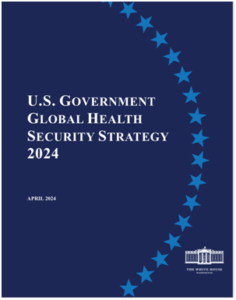 environmental and economic accounting in the context of broadening the national economic accounts.” This is an indication that we can suspend this agenda again. We must stop this plan. (Emp. Mine. Pg. 78) (Source: pg. 49) Note: “Practical challenges (remain) in implementing the theory in a consistent fashion.” (Link)
environmental and economic accounting in the context of broadening the national economic accounts.” This is an indication that we can suspend this agenda again. We must stop this plan. (Emp. Mine. Pg. 78) (Source: pg. 49) Note: “Practical challenges (remain) in implementing the theory in a consistent fashion.” (Link)
1. We MUST defund and stop this statistical package that combines natural assets with GDP, which will explode our capitalistic financial system in the United States. The data is the weakest link. The system must have individual data to monitor consumption accurately. Privacy is the issue.
2. A probable means of attack would be to challenge the subjective and arbitrary concept of monetizing or placing a “number or value” on a natural resource as consumption that impacts every person in the United States. The weight-of-evidence is therefore random.
The argument should focus on the arbitrary values placed on consumption in broadening the national economic accounts beyond GDP. We must question the numbers as not being objective, the methodology, and the application of how those numbers are applied by integrating environmental data into economic accounting.
3. Is consumption double dipping when you have already purchased property or any product? Should we be punished for using the outdoors
as recreation? What was the purpose of creating National Parks? Are the numbers real? Are the numbers believable? WHO decide Our freedom depends on you and our action today.
4. Vote to exit the UN. World Health Organization WHO Treaty meeting May 27-June 1, 2024. Pandemic Agreement Treaty and Amendments to International Health Regulation (IHR)
AUXILIARY QUOTES, NOTES, LEGISLATIVE AUTHORITY, DOCUMENTATION
© 2024 Anita Hoge – All Rights Reserved
E-Mail Anita Hoge: hogieshack@icloud.com
 The Whole Child Must Be Controlled
The Whole Child Must Be Controlled currency and vendors, researchers, and universities get “education” data for free. Of course, more dollars stream to schools by identifying as many children as possible who have been identified for deprogramming. Outside contractors are looking at your children as profit making, data trafficking, walking money trees in this information economy.
currency and vendors, researchers, and universities get “education” data for free. Of course, more dollars stream to schools by identifying as many children as possible who have been identified for deprogramming. Outside contractors are looking at your children as profit making, data trafficking, walking money trees in this information economy. do not enter school with a blank slate. Your families’ imprint has been established. These psychological interventions washes that slate clean to be directed otherwise in the ideological subversion of the WOKE agenda. This is why fidelity is important, “delivering an intervention exactly the way it was designed…and implemented during research studies that have validated its effectiveness.” Teachers are key to the implementation of deprogramming and MUST follow the process completely to accomplish the goals. This is how our schools will accomplish that goal to force the struggle to cleanse our children’s inner souls and attach the leftist ideology. It’s pure artificial stress. (Source:
do not enter school with a blank slate. Your families’ imprint has been established. These psychological interventions washes that slate clean to be directed otherwise in the ideological subversion of the WOKE agenda. This is why fidelity is important, “delivering an intervention exactly the way it was designed…and implemented during research studies that have validated its effectiveness.” Teachers are key to the implementation of deprogramming and MUST follow the process completely to accomplish the goals. This is how our schools will accomplish that goal to force the struggle to cleanse our children’s inner souls and attach the leftist ideology. It’s pure artificial stress. (Source:  In 1994 I was asked to testify at the Department of Interior’s NII, National Information Infrastructure Health and Education Data Security Hearing about CLIN, Community Learning Information Network. I presented a paper entitled “The Medicalization of Schools” along with Pennsylvania Representative Sam Rohrer, and Kent Masterson Brown, Esq., who filed the complaint to stop HillaryCare.
In 1994 I was asked to testify at the Department of Interior’s NII, National Information Infrastructure Health and Education Data Security Hearing about CLIN, Community Learning Information Network. I presented a paper entitled “The Medicalization of Schools” along with Pennsylvania Representative Sam Rohrer, and Kent Masterson Brown, Esq., who filed the complaint to stop HillaryCare.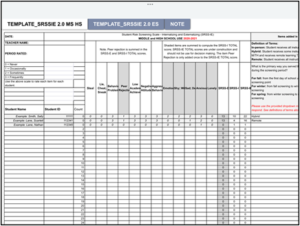 “leveraging policy and funding.” School based mental health clinics for ALL CHILDREN have been given the green-GO-full-speed-ahead including gender affirming care.
“leveraging policy and funding.” School based mental health clinics for ALL CHILDREN have been given the green-GO-full-speed-ahead including gender affirming care. personal data when FERPA, Family Education Rights In Privacy Act, allows personal data to flow to 3rd party vendors? (Source:
personal data when FERPA, Family Education Rights In Privacy Act, allows personal data to flow to 3rd party vendors? (Source: 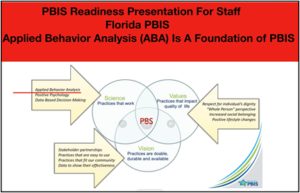 The shocking realization is that our country is at the tipping point that will change the future of America forever. Deprogramming our kids is in full assault as Hillary’s suggestion implies while wide-scale adoption of PBIS is being implemented in American classrooms…and the Medicaid money keeps flowing.
The shocking realization is that our country is at the tipping point that will change the future of America forever. Deprogramming our kids is in full assault as Hillary’s suggestion implies while wide-scale adoption of PBIS is being implemented in American classrooms…and the Medicaid money keeps flowing. previous July, 2019 Bulletin-PBIS, RTI, and MTSS are techniques approved for intervention services provided through schools and ARE INCLUDED in arriving at a disability/disorder for approved Medicaid billing and reimbursement.
previous July, 2019 Bulletin-PBIS, RTI, and MTSS are techniques approved for intervention services provided through schools and ARE INCLUDED in arriving at a disability/disorder for approved Medicaid billing and reimbursement. This agenda has been set up by Obama who was following Hillary Clinton’s agenda “IT’S ABOUT KIDS” now being carried out by the Biden administration. It doesn’t take a village to raise a child.
This agenda has been set up by Obama who was following Hillary Clinton’s agenda “IT’S ABOUT KIDS” now being carried out by the Biden administration. It doesn’t take a village to raise a child.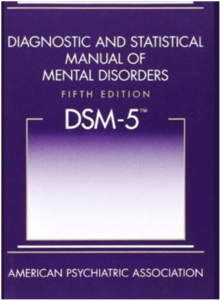 What Does It Mean To Have A DSM Code On Your Child’s Permanent Record?
What Does It Mean To Have A DSM Code On Your Child’s Permanent Record?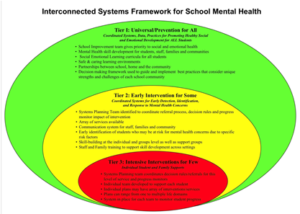 A 3-tiered process ranges from universal/preventive screening for all students, having the least amount of interventions in your child’s personality, to intensive interventions with a re-cycling emphasis. CASEL and PANORAMA are 2 programs that use social and emotional learning as a means to collect this psychological data and implement interventions in their behavior, values, beliefs, and dispositions. The following questions are from Panorama User Guide under the heading Emotion Regulation;
A 3-tiered process ranges from universal/preventive screening for all students, having the least amount of interventions in your child’s personality, to intensive interventions with a re-cycling emphasis. CASEL and PANORAMA are 2 programs that use social and emotional learning as a means to collect this psychological data and implement interventions in their behavior, values, beliefs, and dispositions. The following questions are from Panorama User Guide under the heading Emotion Regulation; where
where  Germany proposes immunity passports that could speed up return to work
Germany proposes immunity passports that could speed up return to work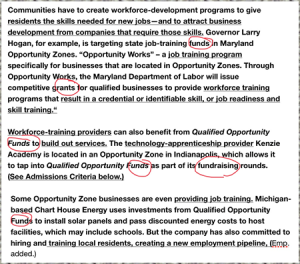 are no safety mechanisms that protect your child who will be recycled toward subjective mental health standards. These social and emotional techniques use sugar-coated terms like multi-tiered systems of support, response to intervention, positive behavior intervention and supports, character, grit, or emotion regulation and they are being pushed down our kids’ throats. Parents have accepted them because they have accepted the ruse. Whose character, grit, or emotions are we emulating?
are no safety mechanisms that protect your child who will be recycled toward subjective mental health standards. These social and emotional techniques use sugar-coated terms like multi-tiered systems of support, response to intervention, positive behavior intervention and supports, character, grit, or emotion regulation and they are being pushed down our kids’ throats. Parents have accepted them because they have accepted the ruse. Whose character, grit, or emotions are we emulating? While these incentives appear to sound great, what type of skills are needed to be re-skilled? What these programs are advertising and what they are doing are very different things. Hand in hand federal money is being spread to accommodate both sides of the fulcrum, using BOP Title I poor children and targeting BOP Title I poor neighborhoods. Children, property, and curriculum are being targeted for reengineered renewal for the global economy and the dark side of capitalism that captures the data. This is a soft-skills mold! The “antithesis between mental and physical labor will vanish” just as Marx had envisioned.
While these incentives appear to sound great, what type of skills are needed to be re-skilled? What these programs are advertising and what they are doing are very different things. Hand in hand federal money is being spread to accommodate both sides of the fulcrum, using BOP Title I poor children and targeting BOP Title I poor neighborhoods. Children, property, and curriculum are being targeted for reengineered renewal for the global economy and the dark side of capitalism that captures the data. This is a soft-skills mold! The “antithesis between mental and physical labor will vanish” just as Marx had envisioned. The trend is reminiscent of the SCANS Department of Labor scheme to create human capital or the worth of the individual for industry.
The trend is reminiscent of the SCANS Department of Labor scheme to create human capital or the worth of the individual for industry.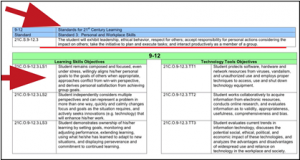 ESSA, Every Student Achieves Act, mandated mental health reconditioning for the first time in history instead of the 3 R’s. Common Core would provide the base knowledge for “functional literacy.” But the mental health intervention strategies codified in law will change our American children into the worker drones for the global economy birth to age 21 with social and emotional learning (mental health conditioning) as the key ingredient. No child will escape, especially independent thinkers, children of patriotic parents, or any child who refuses to bend under the grip of these “change makers.” This is why the Heckman/Duckworth treatises push early childhood education. By starting early, the end result is accomplished sooner. (
ESSA, Every Student Achieves Act, mandated mental health reconditioning for the first time in history instead of the 3 R’s. Common Core would provide the base knowledge for “functional literacy.” But the mental health intervention strategies codified in law will change our American children into the worker drones for the global economy birth to age 21 with social and emotional learning (mental health conditioning) as the key ingredient. No child will escape, especially independent thinkers, children of patriotic parents, or any child who refuses to bend under the grip of these “change makers.” This is why the Heckman/Duckworth treatises push early childhood education. By starting early, the end result is accomplished sooner. (
 Thus, the expansion of charter schools with unelected boards, many for-profit and funded by investment companies, foundations, and private sources, will get a cut of your hard earned tax money which proves this is a move away from having local representatives invested in our schools. No voice, no vote for you the parent or citizen, which means privatizing education. As more Common Core Title I children continue to flood charter, private, and religious schools, accountability expands the “enforcement” mechanism of Title I in ESSA. This in turn, forces accountability toward an authorized charter school management team for all schools…charter, private, religious, daycare, and home schools with the possibility of elimination of public schools all together.
Thus, the expansion of charter schools with unelected boards, many for-profit and funded by investment companies, foundations, and private sources, will get a cut of your hard earned tax money which proves this is a move away from having local representatives invested in our schools. No voice, no vote for you the parent or citizen, which means privatizing education. As more Common Core Title I children continue to flood charter, private, and religious schools, accountability expands the “enforcement” mechanism of Title I in ESSA. This in turn, forces accountability toward an authorized charter school management team for all schools…charter, private, religious, daycare, and home schools with the possibility of elimination of public schools all together.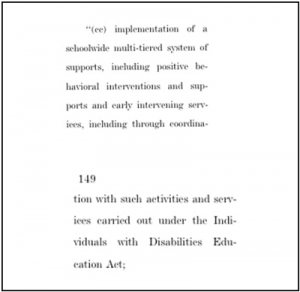 The writing is on the wall. No, the writing is in the legislation, ESSA.
The writing is on the wall. No, the writing is in the legislation, ESSA. Speaking in terms of “equity and excellence,” President Obama had a very well defined CHOICE plan to establish a complete equitable Democracy-and to extinguish our Republic with the force of the federal government behind it. His CHOICE Plan had already been written and had been laid bare for anyone to read called, For Each and Every Child: A STRATEGY FOR EDUCATION EQUITY AND EXCELLENCE. (Source:
Speaking in terms of “equity and excellence,” President Obama had a very well defined CHOICE plan to establish a complete equitable Democracy-and to extinguish our Republic with the force of the federal government behind it. His CHOICE Plan had already been written and had been laid bare for anyone to read called, For Each and Every Child: A STRATEGY FOR EDUCATION EQUITY AND EXCELLENCE. (Source: 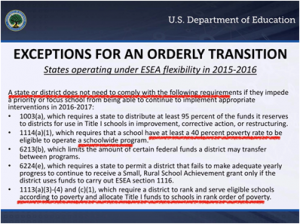 The Real Definition of Title I and School-Wide.
The Real Definition of Title I and School-Wide. 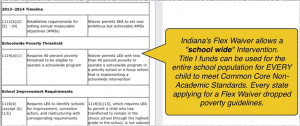
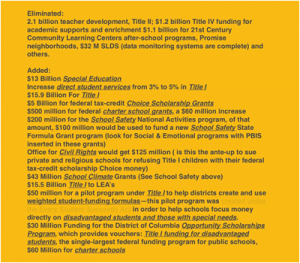 The Exodus
The Exodus agenda is very clear. Schools in the United States have been used in experimental research in the area of the affective domain including the spiritual aspect of a child’s being, the heart. The teaching method is called the “whole child.” This has been the area where values, attitudes, beliefs, and dispositions have been the focus for behavioral conditioning and value change. United States citizens must have their individualist qualities, their freedom loving values, and their individualistic competitive personalities changed. Change in America is a must to conform the U.S. into a socialistic country including global compromise. Americans must become global citizens. Re-engineering education has toppled academics for the new psyche wards claiming to be your neighborhood school. The churches have closed their eyes.
agenda is very clear. Schools in the United States have been used in experimental research in the area of the affective domain including the spiritual aspect of a child’s being, the heart. The teaching method is called the “whole child.” This has been the area where values, attitudes, beliefs, and dispositions have been the focus for behavioral conditioning and value change. United States citizens must have their individualist qualities, their freedom loving values, and their individualistic competitive personalities changed. Change in America is a must to conform the U.S. into a socialistic country including global compromise. Americans must become global citizens. Re-engineering education has toppled academics for the new psyche wards claiming to be your neighborhood school. The churches have closed their eyes. Data in the new Census will be collected on every citizen. Every aspect of your life is recorded. (Data will NOT have to be collected door to door anymore, because the data will be collected electronically with the merging of all U.S. departments into one Census. An algorithm will be devised to compare inputs (cost) and outputs (wages) that will tally your human capital, worth to the economy.) This data will be evidence based and used by your government to be sure EVERYONE is in compliance in education, health, and work. (Source: HR 4174) Children will be molded from birth in the Womb To Workplace mold that the all knowing and all seeing government knows best. As the aging baby boomers die, a new set of values and beliefs will take their place. Compliance, obedience, and acceptance are the goals of social and emotional learning, SEL, and the techniques to determine “talent or abilities” are being scored in every school.
Data in the new Census will be collected on every citizen. Every aspect of your life is recorded. (Data will NOT have to be collected door to door anymore, because the data will be collected electronically with the merging of all U.S. departments into one Census. An algorithm will be devised to compare inputs (cost) and outputs (wages) that will tally your human capital, worth to the economy.) This data will be evidence based and used by your government to be sure EVERYONE is in compliance in education, health, and work. (Source: HR 4174) Children will be molded from birth in the Womb To Workplace mold that the all knowing and all seeing government knows best. As the aging baby boomers die, a new set of values and beliefs will take their place. Compliance, obedience, and acceptance are the goals of social and emotional learning, SEL, and the techniques to determine “talent or abilities” are being scored in every school.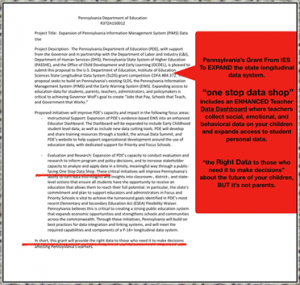 Key to this data mining reveals core personality traits and motivations that drive behavior. Personality traits are the target for change and the experimental research into eugenics in our American schools. (See Part 3 below.)
Key to this data mining reveals core personality traits and motivations that drive behavior. Personality traits are the target for change and the experimental research into eugenics in our American schools. (See Part 3 below.)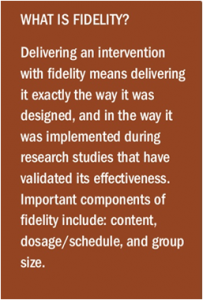 If a child is reluctant to the interventions, they are recycled and a second intervention is delivered with “greater intensity.” (
If a child is reluctant to the interventions, they are recycled and a second intervention is delivered with “greater intensity.” (
 Every school in America is instituting the benign-seeming strategies called social and emotional learning which is perfectly aligned with the use of eugenic intervention models developed by Heckman Economics and Duckworth’s Character Lab. This concept of investing in human capital according to the demands of labor markets is perfectly aligned with the use of the Heckman/Duckworth eugenic models in education. Social and emotional learning has new meaning. Grit has new meaning associated with genetic research. Assessment of human capital will now have dollars signs on every resume detailing the worth of that individual to the economy.
Every school in America is instituting the benign-seeming strategies called social and emotional learning which is perfectly aligned with the use of eugenic intervention models developed by Heckman Economics and Duckworth’s Character Lab. This concept of investing in human capital according to the demands of labor markets is perfectly aligned with the use of the Heckman/Duckworth eugenic models in education. Social and emotional learning has new meaning. Grit has new meaning associated with genetic research. Assessment of human capital will now have dollars signs on every resume detailing the worth of that individual to the economy.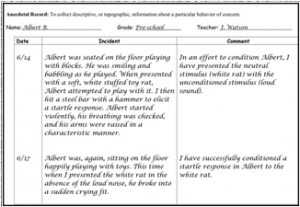 Remember, that the data collection by the government in the expanded state longitudinal data systems are regarded “Womb to Workplace.” The Data Systems have already been expanded, merged, and standardized for identification, research, and retrieval. Your children have a unique national ID. FERPA allows DNA strands to be accessed WITHOUT parental consent. Grants are being showered onto schools to implement PBIS and RTI to train teachers how to do the manipulative behavioral techniques and conditioning through social and emotional learning and data collection for the federal government. Data is shared whole-heartedly. This is a huge federal-feeding frenzy. (I released the first documentation about data mining personality profiles and psychological interventions in Pennsylvania creating Psychometric Dossiers collected by school personnel in 2014. Source: Moratorium On Data, 2014:
Remember, that the data collection by the government in the expanded state longitudinal data systems are regarded “Womb to Workplace.” The Data Systems have already been expanded, merged, and standardized for identification, research, and retrieval. Your children have a unique national ID. FERPA allows DNA strands to be accessed WITHOUT parental consent. Grants are being showered onto schools to implement PBIS and RTI to train teachers how to do the manipulative behavioral techniques and conditioning through social and emotional learning and data collection for the federal government. Data is shared whole-heartedly. This is a huge federal-feeding frenzy. (I released the first documentation about data mining personality profiles and psychological interventions in Pennsylvania creating Psychometric Dossiers collected by school personnel in 2014. Source: Moratorium On Data, 2014:  banks to see your checkbook (
banks to see your checkbook (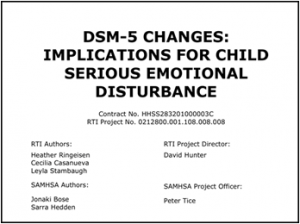 Education departments, Silicon Valley and big business are on a roll. They get their raw material for free…your kid’s data. We put CASEL (Collaborative for Academic, Social, and Emotional Learning), University of Memphis, Vanderbilt University, the TN Department Of Special Education, and SAMHSA (Substance Abuse and Mental Health Services Administration under the U.S. Department Of Health and Human Services, HHS, ACT, American College Testing (Tessera and Engage) and the Tennessee Department Of Education on notice. We intend to have the law enforced.
Education departments, Silicon Valley and big business are on a roll. They get their raw material for free…your kid’s data. We put CASEL (Collaborative for Academic, Social, and Emotional Learning), University of Memphis, Vanderbilt University, the TN Department Of Special Education, and SAMHSA (Substance Abuse and Mental Health Services Administration under the U.S. Department Of Health and Human Services, HHS, ACT, American College Testing (Tessera and Engage) and the Tennessee Department Of Education on notice. We intend to have the law enforced. The collection of data is an invasion of privacy. Interventions or the targeting of behavior change and personality change through therapeutic psychological manipulation without a parent’s knowledge or consent is an invasion of Constitutional Rights. Two VERY different concepts that must be understood when translating the implications for future generations of our country. When you think about who are the most vulnerable, you can bet that our young American boys are targeted at school for conditioning to be docile compliant little robots. Is being an American traditional, strong masculine man taboo? (
The collection of data is an invasion of privacy. Interventions or the targeting of behavior change and personality change through therapeutic psychological manipulation without a parent’s knowledge or consent is an invasion of Constitutional Rights. Two VERY different concepts that must be understood when translating the implications for future generations of our country. When you think about who are the most vulnerable, you can bet that our young American boys are targeted at school for conditioning to be docile compliant little robots. Is being an American traditional, strong masculine man taboo? (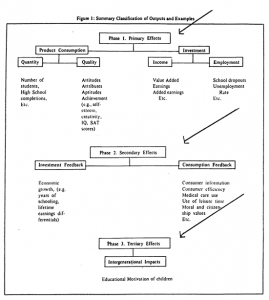 The original graph above taken from the federal Cooperative Accountability Project (1974) outlines societal outputs monitoring all aspects of inputs in life, womb to tomb. All outputs can be categorized, cross referenced, and financially detailed to determine what the future global citizen will “be like.” The worth of a person (identified with a Unique National ID) can be calculated by creating an algorithm subtracting all investments and consumption through feedbacks made to evaluate the value of the end product. The key to this process is evidence-based which codes every action taken to control the end product. What is the objective? Monitoring the processing of human capital to get to the defined end product. How will the end product be controlled? Cooperative accountability! That’s the science in HR 4174, the legislation to create one massive government database that can hook into any data it wants to determine what you can or cannot do. Your future hangs in the balance.
The original graph above taken from the federal Cooperative Accountability Project (1974) outlines societal outputs monitoring all aspects of inputs in life, womb to tomb. All outputs can be categorized, cross referenced, and financially detailed to determine what the future global citizen will “be like.” The worth of a person (identified with a Unique National ID) can be calculated by creating an algorithm subtracting all investments and consumption through feedbacks made to evaluate the value of the end product. The key to this process is evidence-based which codes every action taken to control the end product. What is the objective? Monitoring the processing of human capital to get to the defined end product. How will the end product be controlled? Cooperative accountability! That’s the science in HR 4174, the legislation to create one massive government database that can hook into any data it wants to determine what you can or cannot do. Your future hangs in the balance. 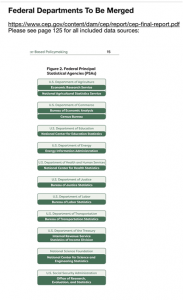 Evidence-based means total quality management or management by objectives for a planned economy. The original name for the planned economy was planning, programming, budgeting system, PPBS, in which 10 federal coded handbooks were developed for computer retrieval in the 70’s. The future is here in legislation HR 4147, brought forward by Speaker Ryan (R-WI) and Sen.Patty Murray (D-WA) that merges all data collected in the United States updating the federal handbooks.
Evidence-based means total quality management or management by objectives for a planned economy. The original name for the planned economy was planning, programming, budgeting system, PPBS, in which 10 federal coded handbooks were developed for computer retrieval in the 70’s. The future is here in legislation HR 4147, brought forward by Speaker Ryan (R-WI) and Sen.Patty Murray (D-WA) that merges all data collected in the United States updating the federal handbooks.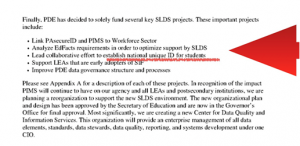 children is already contracted with 3rd party vendors to research interventions, curriculum development, software development, providers, and yes, access to the results of testing, privacy invading surveys, and assessments. But there are kinks in the armor, pesky laws would have to be changed. There are barriers for the elite to solidify this system. But there were many steps already accomplished that moved us closer into the planned economy.
children is already contracted with 3rd party vendors to research interventions, curriculum development, software development, providers, and yes, access to the results of testing, privacy invading surveys, and assessments. But there are kinks in the armor, pesky laws would have to be changed. There are barriers for the elite to solidify this system. But there were many steps already accomplished that moved us closer into the planned economy. The Obama EO Is A Barrier For HR 4174 To Be Achieved
The Obama EO Is A Barrier For HR 4174 To Be Achieved Our campaign is focused on the illegal violations of Constitutional protections and privacy called Child Abuse in the Classroom, A Legal Challenge To ESSA. Our goals, REPEAL ESSA AND RESTORE FERPA. No one else is talking about the interventions that are processing your kids into this federal cake-baked mold.
Our campaign is focused on the illegal violations of Constitutional protections and privacy called Child Abuse in the Classroom, A Legal Challenge To ESSA. Our goals, REPEAL ESSA AND RESTORE FERPA. No one else is talking about the interventions that are processing your kids into this federal cake-baked mold. Parents, the social, emotional, and behavioral aspects of your children are being monitored, evaluated, and CODED. Behavioral interventions are being performed without your written permission or consent. Sometimes the names for this are changed to such flowery phrases as mindsets, character development, citizenship, “grit”, or even civics. This tactic effectually catches some parents off guard. Why? Because it sounds so good. Do we really know what is being tested and taught in America’s classrooms? Do you know what data is being collected on your child? Education has moved away from academics. There is now a full focus on personality with teaching and testing in non-Academic areas. The goal is changing the social, emotional, and behavioral personality traits of your child.
Parents, the social, emotional, and behavioral aspects of your children are being monitored, evaluated, and CODED. Behavioral interventions are being performed without your written permission or consent. Sometimes the names for this are changed to such flowery phrases as mindsets, character development, citizenship, “grit”, or even civics. This tactic effectually catches some parents off guard. Why? Because it sounds so good. Do we really know what is being tested and taught in America’s classrooms? Do you know what data is being collected on your child? Education has moved away from academics. There is now a full focus on personality with teaching and testing in non-Academic areas. The goal is changing the social, emotional, and behavioral personality traits of your child. So the content of many video games and computerized curricula may not be what parents think. What are children learning and how do you define what SUCCESS means in the future? This Webinar held by EdWeek, financed by the Bill and Melinda Gates Foundation and “grit” psychologist Angela Duckworth, gives you a real look at what the objectives are. Who is defining what grit and character really is? What is the significance when the objective is to separate the motivated from the unmotivated as Luksha describes?
So the content of many video games and computerized curricula may not be what parents think. What are children learning and how do you define what SUCCESS means in the future? This Webinar held by EdWeek, financed by the Bill and Melinda Gates Foundation and “grit” psychologist Angela Duckworth, gives you a real look at what the objectives are. Who is defining what grit and character really is? What is the significance when the objective is to separate the motivated from the unmotivated as Luksha describes? worthlessness to the economy, is coming to fruition. Luksha describes the new global digital world to MIT observers in the following links: (
worthlessness to the economy, is coming to fruition. Luksha describes the new global digital world to MIT observers in the following links: ( Values are to be taught by online virtual game apps that form common values, not churches. Child labor laws would have to be changed for the Mickey Mouse Club Law, legislation introduced for early intellectual labor, 10 years old and up. A Billion Student University emerges with IT companies consuming the roll as the leaders of the Global Education Market, not universities. The definition of a new “modernist family” will need “competent” parenting training, and a shift in the childhood model to a more flexible morality. This includes opening the door at a younger biological age to an ever expanding range of activities (education, business and political activities, sexual activity, right to access pharmacological “cognitive intensifiers,” etc. Well, are we ready for this? Does the Luksha agenda normalize all sexual activity like pedophilia, transgenderism, sexual predators, and homosexuality? Is there such a thing as a child’s consent to sexual activity?
Values are to be taught by online virtual game apps that form common values, not churches. Child labor laws would have to be changed for the Mickey Mouse Club Law, legislation introduced for early intellectual labor, 10 years old and up. A Billion Student University emerges with IT companies consuming the roll as the leaders of the Global Education Market, not universities. The definition of a new “modernist family” will need “competent” parenting training, and a shift in the childhood model to a more flexible morality. This includes opening the door at a younger biological age to an ever expanding range of activities (education, business and political activities, sexual activity, right to access pharmacological “cognitive intensifiers,” etc. Well, are we ready for this? Does the Luksha agenda normalize all sexual activity like pedophilia, transgenderism, sexual predators, and homosexuality? Is there such a thing as a child’s consent to sexual activity? The Invisible Empire Made Up of Men of Evil Genius.
The Invisible Empire Made Up of Men of Evil Genius. Hillary’s Russian Reset in 2009 happened to be more intense than most people are aware. The entire bizarre conspiracy of the Russian/Trump fiasco in American politics may be a smokescreen for Russian ties hidden under the Obama administration. Russian turbulence continues to hang over the Trump administration even after ex-FBI Director Comey testified to Congress that President Trump was not being investigated.
Hillary’s Russian Reset in 2009 happened to be more intense than most people are aware. The entire bizarre conspiracy of the Russian/Trump fiasco in American politics may be a smokescreen for Russian ties hidden under the Obama administration. Russian turbulence continues to hang over the Trump administration even after ex-FBI Director Comey testified to Congress that President Trump was not being investigated. technology, education, urban development, and nuclear waste energy. [
technology, education, urban development, and nuclear waste energy. [ The “danger” information was given to the tech companies by the FBI Boston office. Was that information heeded? It appears not. Hillary’s State Department actively and aggressively encouraged American firms to participate in Skolkovo. The State Department developed numerous and alarming relationships with this Kremlin-controlled entity. Plus, Hillary’s controversial campaign manager John Podesta, who was also Bill Clinton’s Chief of Staff, has woven many paths passing the “honeypot” with Putin’s investment company, Rusnano, which invested $35m in Joule Global Stichting where Podesta was a member of the board which also included Anatoly Chubais, the Chairman of Rusnano, who also joined the Joule board of directors. Genetic Engineering and Biotechnology News reported that Rusnano invested $35m to build a research center in Russia. (Source:
The “danger” information was given to the tech companies by the FBI Boston office. Was that information heeded? It appears not. Hillary’s State Department actively and aggressively encouraged American firms to participate in Skolkovo. The State Department developed numerous and alarming relationships with this Kremlin-controlled entity. Plus, Hillary’s controversial campaign manager John Podesta, who was also Bill Clinton’s Chief of Staff, has woven many paths passing the “honeypot” with Putin’s investment company, Rusnano, which invested $35m in Joule Global Stichting where Podesta was a member of the board which also included Anatoly Chubais, the Chairman of Rusnano, who also joined the Joule board of directors. Genetic Engineering and Biotechnology News reported that Rusnano invested $35m to build a research center in Russia. (Source: 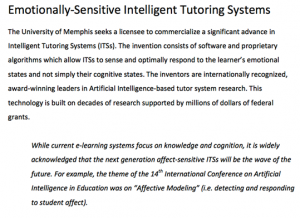 [
[